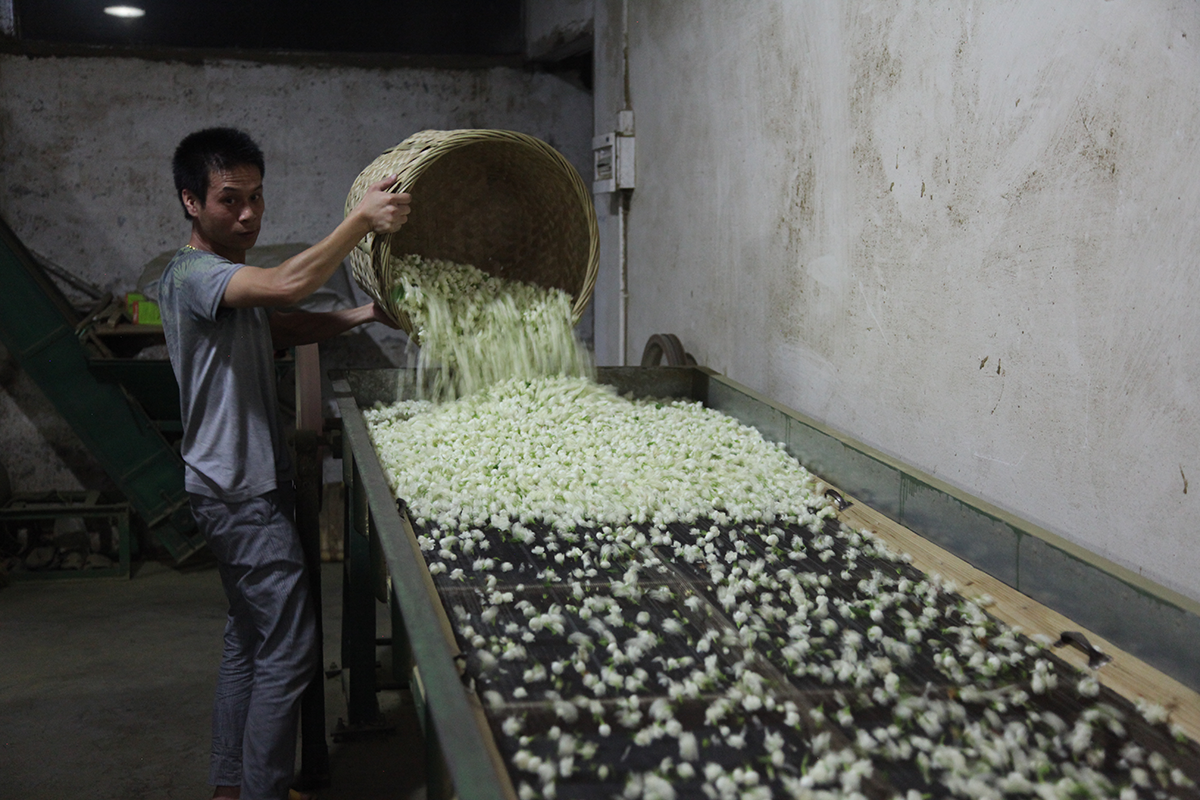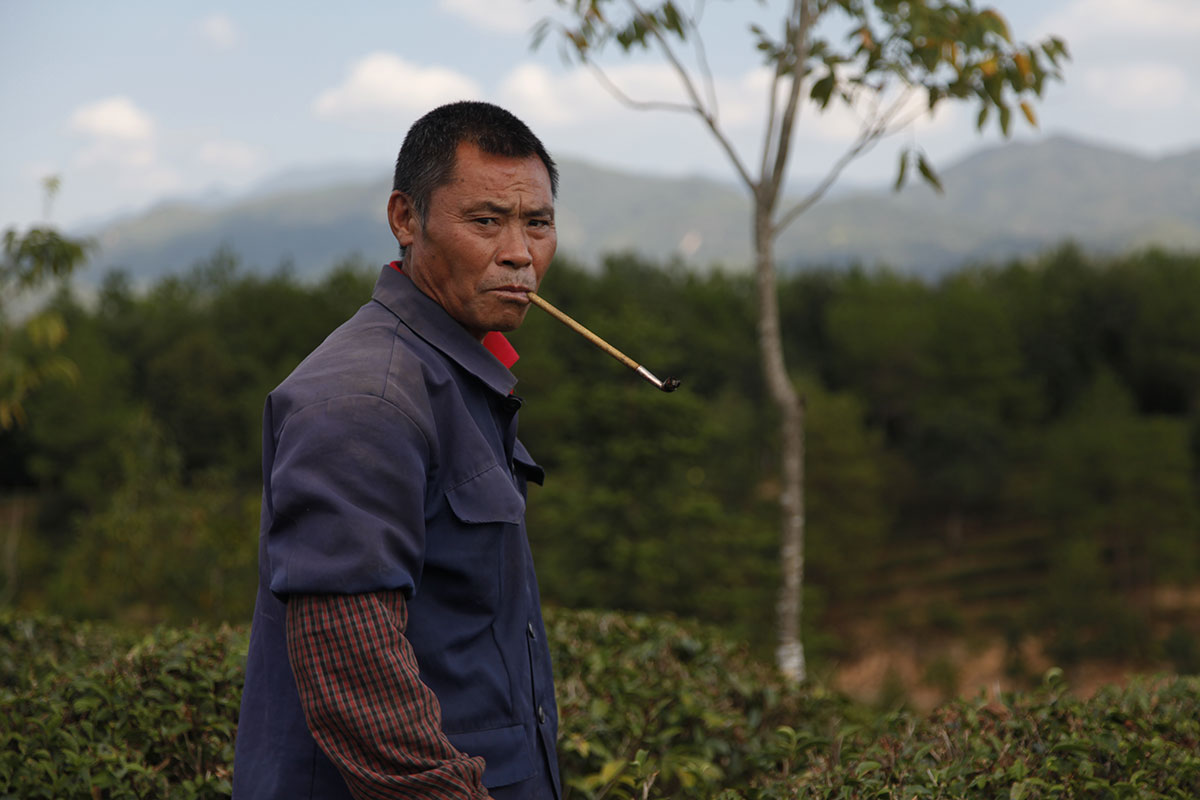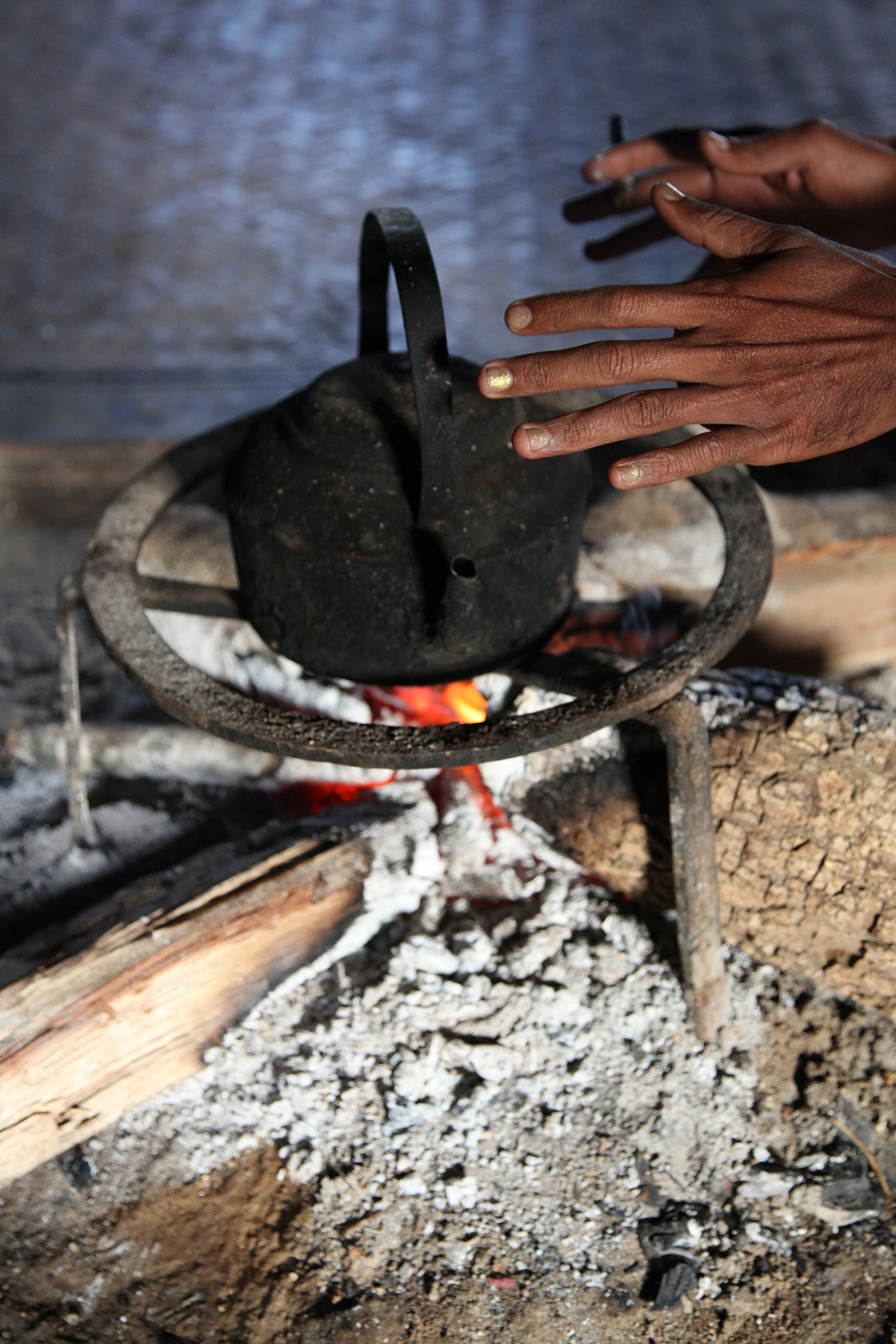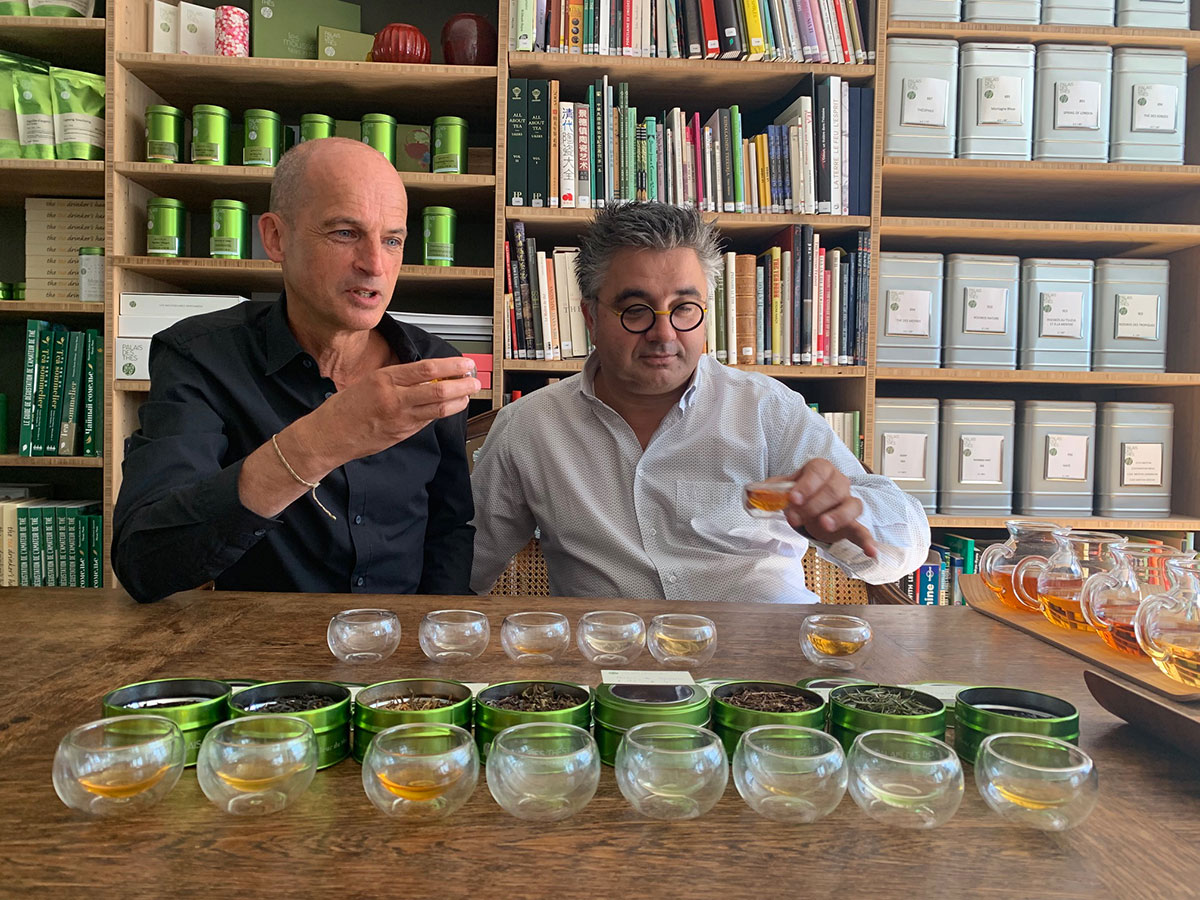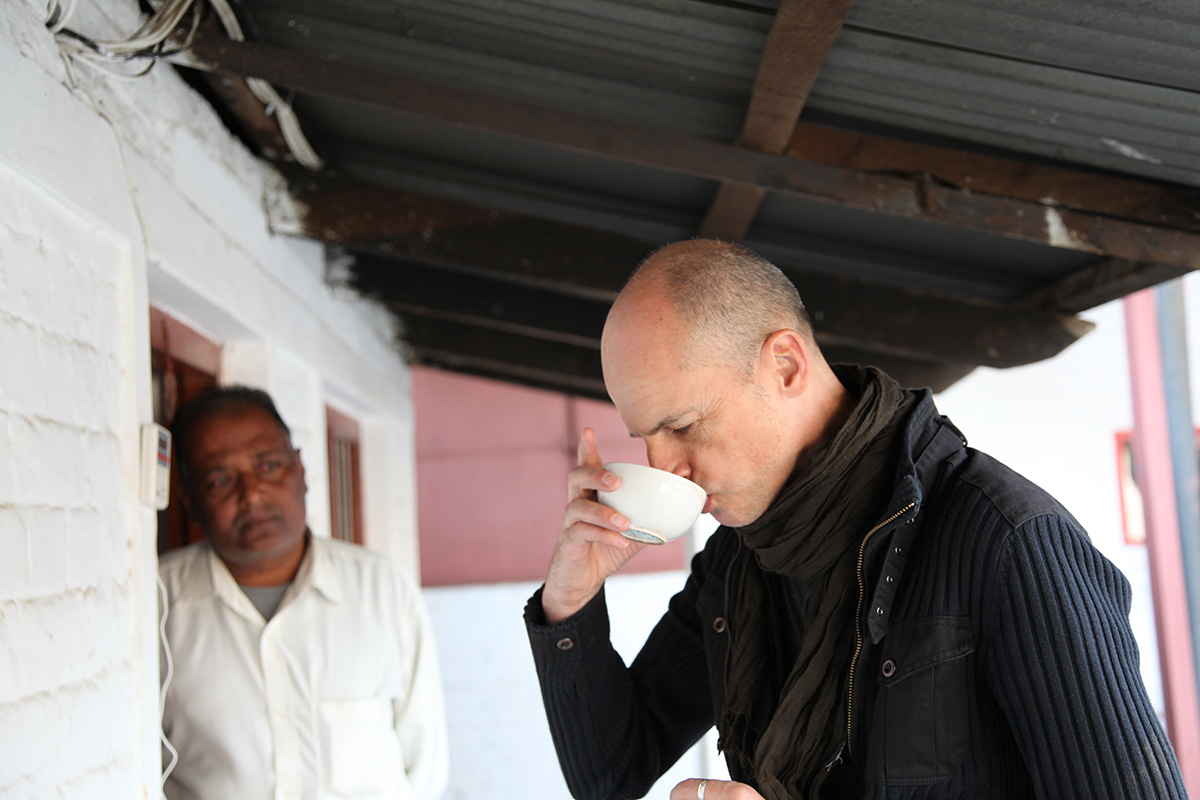Now the temperatures have dropped, we want to drink different types of teas from those we enjoyed in warmer weather. This season calls for rounder, fuller liquors; warm, woody notes; spicy and stewed fruit flavours. Here are some suggestions for teas to sip by the fire. Try a Jukro from South Korea for its cocoa notes, a Chinese Qimen Hong Cha Mao Feng for its leather notes, a Dianhong Jin Ya for its honey notes, a Dongyan Shan Tie Guan Yin from Taiwan for its stewed fruit notes, a Japanese Shiraore Kuki Hojicha for its toasted notes, and a Spirit of Smoke from Malawi for its smoky notes.
All about organic
I dream of a world where everything is organic, everyone is kind. A world with flowers and bees. A world in which people still have a place, a world on a human scale. But when I go shopping, I don’t always buy organic products. Why not? Because when I’m in the countryside, I visit neighbouring farms, I know the farmers. They run small operations and don’t have certification, but I know how they work, the quality of their products, the care they take in production. I can see their facilities, I can see how they treat their animals, I can talk to them about their agricultural methods. This connection is valuable, it is based on trust, and is worth much more than a logo. The same goes for tea. I trust the AB organic label we have in France, and everything it stands for, but I am very happy to buy from small Nepalese farmers, for example, who have joined forces to form a co-operative with perhaps several hundred members, who I know, and whose practices I understand. These farmers know nothing about the world of certification, and probably would not be able to afford it anyway.
Varying qualities of jasmine tea
In China, the best jasmine teas come from the Fujian region (photo). They are made using the finest green teas in the province, harvested in April. The jasmine flowers are picked between July and early September. But if we go by volume rather than quality, the biggest producing region is Guangxi. There, they use green tea of a lower quality, while their jasmine flowers from early May to the end of September, hence the high volume, which is double or triple that of Fujian.
Mr Huang, a displaced worker
Mr Huang is one of millions of Chinese workers who have decided to leave their native region to earn a living elsewhere. It is much easier to find work in the wealthier coastal provinces than in the interior of the country. So every year, Mr Huang leaves Guizhou, where he was born, and where he grows vegetables in a mountain village, and travels to the Wuyi Mountains in Fujian. There, inhabitants’ incomes have increased significantly, and people no longer want to work in the fields, preferring to live in the city. So Mr Huang goes there to work on a wonderful organic plantation. He tends to the tea plants and helps with the harvest from early March until the end of September, before returning to his family in his own province. And every year, he never hesitates to repeat this journey, for a monthly wage of 5,500 yuan.
Rare smoked teas
Smoked tea, or Lapsang Souchong, is a speciality of Fujian. It is not very popular with Chinese people, and so it is exported. European food safety regulations were tightened a few years ago, and it is now very difficult to find a smoked tea that meets those standards. This is not due to specific pesticides, but because of a molecule called anthraquinone that forms naturally during the smoking process. For several years I’ve been encouraging a number of farmers to modify their smoking technique so that their tea can be approved. This is a slow, ongoing process, but there have been some positive results.
Quimper gets its Palais
The people of Quimper now have their very own Palais des Thés, at 15 Rue Kéréon, near the cathedral.
I was delighted to open the shop, partly because I love Brittany, but above all because François, the manager of this beautiful shop, worked in our Rennes shop for six years as a sales adviser, then as the assistant manager. He has passed his Tea Sommelier exam, meaning he has a rare level of expertise, which is coupled with his natural warmth. A few months ago, I travelled with him and some other tea sommeliers around the tea plantations of Darjeeling. Here he is with me and Christine Delétrée, our network manager. I wish him all the very best in the wonderful city of Quimper!
A Christmas log straight out of Wonderland
The Christmas logs designed by our leading pastry chefs are eagerly anticipated. We always look forward to the moment when the log is revealed, and we can admire its form and flavour. There is no limit on the imagination.
I’d like to present the Christmas log by Bryan Esposito, Head Pastry Chef at the Hôtel du Collectionneur in Paris. He was inspired by tea, and not just any tea either – No. 25 Black Tea by Palais des Thés. This exquisite creation has more than a touch of Alice’s Wonderland about it. A teapot to enjoy with family or friends and appreciate its gastronomic delights.
The right infusion temperature
When you’re travelling, you sometimes have to boil water to purify it. For tea, that’s obviously not ideal, especially as some teas need to be infused at 50°, 70° or 80°C. Here is a simple method to reach the correct water temperature for your tea (this will be marked on the packaging of any decent tea merchant). When your water has boiled, pour it into a recipient. The water temperature will drop by 9°C. Then pour it into another; it will drop by 9°C again. And so on.
Frédéric Bau, pastry chef and chocolatier, founder of the Valrhona School
Drinking and tasting tea with people who specialise in a different product is fascinating. Whether your work revolves around tea, chocolate, olive oil, wine or any other fine ingredient, the tasting techniques are the same. But the experience differs in that each substance has its own range of aromas, textures and flavours. We’re like musicians who play different parts but all share a love of music.
I was lucky enough to receive a visit from Frédéric Bau. Frédéric is one of the great pastry chefs, as well as the founder of the Valrhona School and the Creative Director of Valrhona. Together, we tasted eight premium teas, infused at room temperature.
It was a wonderful opportunity to share our impressions and talk about our passions.
All my favourite teas
I’m often asked what my favourite tea is, and the question always makes me nervous. Each time I have to think about what to say. Someone who doesn’t know much about tea might say they like a certain type of tea, and someone else might name a different type. But when you have the incredible and very special opportunity to taste the best teas in the world throughout the year, like a top sommelier drinking wine, how is it possible to name just one?
When you’ve tasted so many teas of each type, they become part of you. You get to know them from every angle, you discover their unique characteristics, their point of equilibrium, their harmony. You’re the best placed to appreciate them. This applies whether it’s a lightly oxidised Taiwanese Oolong, a First-Flush Darjeeling, an Oriental Beauty, a Japanese Ichibancha, a new-season Chinese green tea, a hand-rolled Nepalese tea, a black Chinese tea such as a Qimen or a Yunnan, a Rock tea or a Phoenix tea, a dark tea from China, Africa or elsewhere, a Mao Cha plucked from hundred-year-old trees or a Gao Shan Cha, to name just a few. You’re the best placed to appreciate them and the worst placed to pick just one.
So if you meet me, please be kind and don’t ask me to name my favourite tea. Instead, ask me what I love about this tea, or that tea, ask me about the feelings they evoke. Talk to me about the great variety of sensory and emotional responses instead of restricting me to a few.



